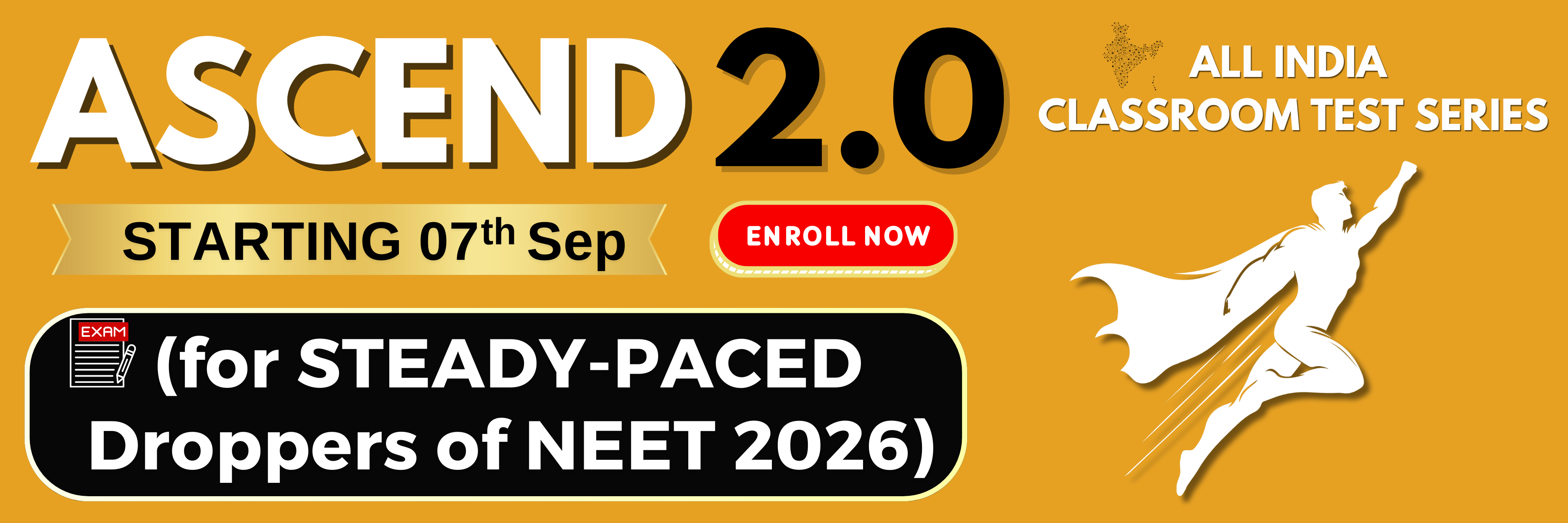What fraction of a reactant showing first order remains after 40 minute if t1/2 is 20 minute?
1. 1/4
2. 1/2
3. 1/8
4. 1/6
प्रथम कोटि को दर्शाने वाले अभिकारक का क्या अंश 40 min के बाद रहता है यदि t1/2 20 min है?
(1) 1/4
(2) 1/2
(3) 1/8
(4) 1/6
A plot of ln rate Vs ln C for the nth order reaction gives
(1) a straight line with slope n and intercept ln
(2) a straight line with slope (n – 1)
(3) a straight line with slope ln and intercept ‘n’
(4) a straight line with slope –n and intercept
Nवीं कोटि अभिक्रिया के लिए ln दर व ln C का आरेख देता है
(1) प्रवणता n और अंत खंड ln के साथ एक सीधी रेखा
(2) प्रवणता (n – 1) के साथ एक सीधी रेखा
(3) प्रवणता ln और अंत खंड ‘n’ के साथ एक सीधी रेखा
(4) प्रवणता –n और अंत खंड के साथ एक सीधी रेखा
Hydrogenation of vegetable ghee at 250C reduces pressure of H2 from 2 atom to 1.2 atom in 50 minute. The rate of reaction in terms of molarity per second is:
1. 1.09 x 10-6
2. 1.09 x 10-5
3. 1.09 x 10-7
4. 1.09 x 10-8
250C पर वनस्पति घी का हाइड्रोजनीकरण, 50 मिनट में H2 के दाब को 2 परमाणु से 1.2 परमाणु तक कम करता है। मोलरता के संदर्भ में अभिक्रिया की दर प्रति सेकंड क्या है?
(1) 1.09 x 10-6
(2) 1.09 x 10-5
(3) 1.09 x 10-7
(4) 1.09 x 10-8
When ethyl acetate was hydrolysed in pressure of 0.1 N HCl, the rate constant was found to be 5.40 x 10-5 sec-1 . But when 0.1 N H2SO4 was used for hydrolysis, the rate constant was found to be 6.25 X10-5sec-1. Thus, it may be concluded that:
1. H2SO4 is stronger than HCI
2. H2SO4 is weaker than HCl
3. H2SO4 and HCl both have the same strength
4. the data are not sufficient to compare the strength of H2SO4 and HCI
जब एथिल एसीटेट 0.1 N HCl के दाब में जलअपघटित किया गया, तो दर स्थिरांक 5.40 x 10-5 sec-1 पाया गया था। लेकिन जब 0.1 N H2SO4 जलअपघटित के लिए उपयोग किया गया, दर स्थिरांक 6.25 X10-5sec-1 पाया गया। इस प्रकार, यह निष्कर्ष निकाला जा सकता है कि:
(1) H2SO4 HCl से प्रबल है
(2) H2SO4 HCl से दुर्बल है
(3) H2SO4 और HCl दोनों की सामर्थ्य समान है
(4) H2SO4 और HCl की सामर्थ्य की तुलना करने के लिए आकड़े पर्याप्त नहीं है
For the system If the activation energy for the forward step is 100 kcal/mol.What is the ratio of temperature at which the forward and backward reaction shows the same % change of rate constant per degree rise of temperature ? (1 cal= 4.2 J)
(A)
(B)
(C)
(D)
निकाय के लिए यदि अग्र पद के लिए सक्रियण ऊर्जा 100 kcal / mol है। तापमान का अनुपात जिस पर अग्र और पश्च अभिक्रिया तापमान के प्रति डिग्री वृद्धि की दर के समान % परिवर्तन को दर्शाता है? (1 cal= 4.2 J)
(1)
(2)
(3)
(4)
The rate of a chemical reaction doubles for every 10°C rise of temperature. If the temperature is raised by 50°C, the rate of the reaction increases by about :
1. 10 times
2. 24 times
3. 32 times
4. 64 times
The rate of a chemical reaction doubles for every 10°C rise of temperature. If the temperature is raised by 50°C, the rate of the reaction increases by about :
तापमान के प्रत्येक 10°C वृद्धि की पर एक रासायनिक अभिक्रिया की दर दोगुनी हो जाती है। यदि तापमान 50°C से बढ़ाया जाता है, तो अभिक्रिया की दर लगभग बढ़ जाती है:-
1. 10 गुना
2. 24 गुना
3. 32 गुना
4. 64 गुना
In Arrhenius equation K = Ae-Ea/RT, the quantity e-E/kT is referred as:
1. Boltzmann factor
2. frequency factor
3. activation factor
4. none of these
आरेनियस समीकरण K = Ae-Ea/RT में, परिमाण e-E/kT किसके रूप में संदर्भित किया जाता है:
1. बोल्ट्ज़मान गुणक
2. आवृत्ति गुणक
3. सक्रियण गुणक
4. इनमें से कोई नहीं
The half life time for the decomposition of a substance dissolved in is 2.5 hour at C. How much of the substance will be left after 10 hours, if the initial weight of the substance is 160 gm ?
1. 20 gm
2. 30 gm
3. 40 gm
4. 10 gm
C पर में घुले हुए किसी पदार्थ के विघटन के लिए अर्ध आयु काल 2.5 hour है। 10 hour के बाद पदार्थ का कितना भाग बचेगा, यदि पदार्थ का प्रारंभिक भार 160 gm है?
(1) 20 gm
(2) 30 gm
(3) 40 gm
(4) 10 gm
A first order reaction was started with a decimolar solution of the reactant. After 8 minutes and 20 seconds, its concentration was found to be M/100. Determine the rate constant of the reaction.
(A)
(B)
(C)
(D)
प्रथम कोटि अभिक्रिया अभिकारक के डेसीमोलर विलयन के साथ प्रारंभ हुई थी। 8 min और 20 sec के बाद, इसकी सांद्रता M/100 पाई गई। अभिक्रिया का दर स्थिरांक निर्धारित कीजिए।
(1)
(2)
(3)
(4)
A hypothetical reaction, A2 +B2 2AB mechanism as given below;
A2 A+ A ............(Fast)
A+B2 → AB + B ............(Slow)
A+ B → AB ............(Fast)
The order of the overall reaction is:
1. 2
2. 1
3. 1.5
4. zero
एक काल्पनिक अभिक्रिया, A2 +B2 2AB क्रियाविधि नीचे दी गई है:
A2 A + A ............ (तेज)
A+B2 → AB + B ............(धीमा )
A+ B → AB ............ (तेज)
समग्र अभिक्रिया की कोटि है:
1. 2
2. 1
3. 1.5
4. शून्य







